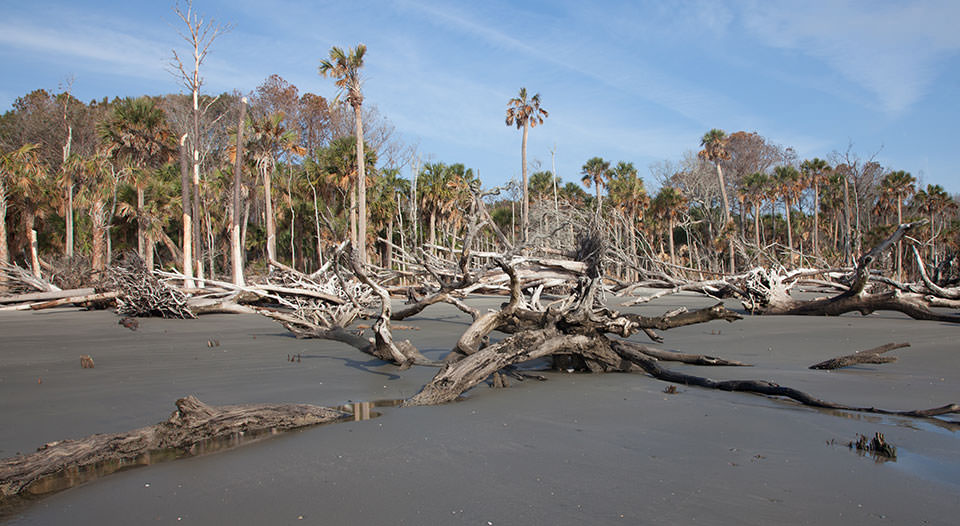
According to a research report published by a research team at Rutgers University, the rising sea level reveals the fact that the soil on the eastern coast of the United States is submerged in seawater and the forests are dying from salt. The landscape lined with changed trees can be described as a ghost forest, a ghost forest.
There is no doubt that climate change is raising sea levels and that flood damage is exacerbated by waves and tsunamis. Accordingly, people, infrastructure facilities, and ecosystems are exposed to risks. The ghost forest, which can be called an example of this danger, is still expanding.
A ghost forest is a phenomenon in which the soil is submerged in seawater and trees that are not resistant to salt water gradually wither. Dead trees soon fall off their leaves or branches, but only their trunks stand for decades as they fade, decay or dry out due to exposure to sunlight. Plants that have adapted to the Yancheng wetland invade and cover the floor of the ghost forest. However, the lost ecosystem is not restored.
The research team believes that the biggest factor causing ghost forestation is rising sea level due to climate change, and thus the area of soil immersed in waves and tsunamis is increasing. It is said that the haunting of coastal forests that extends to Massachusetts in northern Virginia, south of the eastern coast of the United States, where damage from waves and tsunamis increases year by year, is said to be underway.
It was also found that the boundary between the coastal forest and the Yancheng wetland was gradually moving inland. For example, in the Chesapeake Bay, Virginia, there is a fluctuation of about 0.5m per year, and it is said that it has been observed for the past 100 years. It is also said that this change is not uniform, and in the Chesapeake Bay, there are areas that move up to 6m inland per year. Not only that, it is occurring in Texas, Louisiana, Mississippi, Alabama and Florida along the east coast and the Gulf of Mexico.
Climate change impacts don’t just promote ghost forests. As ghost forests progress and forest area decreases, negative patterns that exacerbate climate change itself can repeat itself. Natural forests from Virginia to Maine in eastern United States are now an important carbon sink with a large number of conifers that photosynthesize throughout the year. Forest soil alone absorbs carbon, but if it is drowned in water, the effect is halved. One of the benefits of carbon sequestration and storage of healthy coastal forests. However, changes in coastal forest wetlands can lead to loss of carbon sequestration. This releases some of the carbon into the atmosphere, and the rest can move elsewhere.
This is not the only negative impact that ghost forestation has on the ecosystem. According to the research team, there are many rare birds and plants in coastal forests. In other words, forests are a treasure trove of biodiversity, and these forest soils also store rainwater and protect people living inland rather than forests from flood damage.
Then, what measures are needed to prevent the coastal forests from becoming ghost forests? It is explained that careful planning of land use is the key. Measures are needed to protect coastal forests from developing logging and, in some cases, state protection. It is also important to take one step further and reforestation to expand the area of coastal forests inland. It can be more effective by planting plants that are resistant to salt water. However, since most of the coastal forests are private forests, it is pointed out that a compromise with the owner is necessary. 77% of private forests across the United States are concentrated in the East.
Ghost forests are no longer confined to a specific area, but are spreading across the east coast of the United States. The speed of progress and the extent of impact depend on the location, but it is clear that sea level rise and the revised Land Use Planning Act have a significant impact on coastal forests. Related information can be found here.

